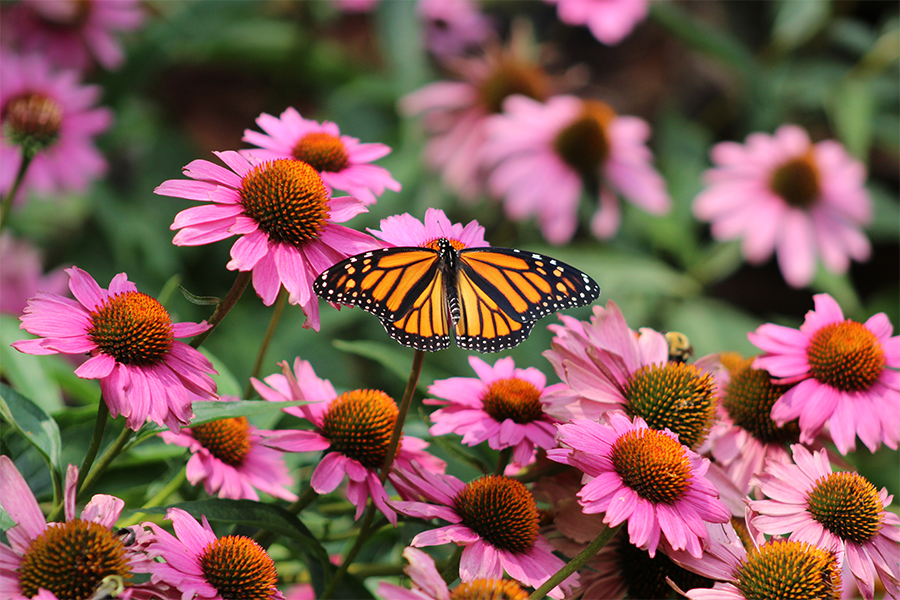
The first statewide program in the nation to allow any resident to apply for funding and technical assistance to support pollinator populations is abuzz with success.
The Lawns to Legumes program was launched in 2019 as a collaboration of legislators, conservation organizations, and the public to address the rapid loss of Minnesota’s pollinator species, including bees. U of M College of Design adjunct assistant professor Dan Shaw has played a key role in the development of the program, acting as program coordinator. Shaw is also a senior ecologist with the Minnesota Board of Water and Soil Resources.
With $900,000 of pilot-phase funding from Minnesota’s Environment and Natural Resources Trust Fund, the program emphasizes the establishment of habitat for the rusty patched bumblebee, monarch butterflies, and other at-risk pollinators. Populations of these species have declined by around 80 percent over the last 20 years.
Drawing on Shaw’s expertise, Lawns to Legumes uses the design process extensively.
“We defined the environmental and social challenges to be solved, collected information, developed strategies, and allowed the program to evolve based on results,” says Shaw.
Lawns to Legumes has four components:
- demonstration neighborhoods that build habitat corridors across cities or counties to support at-risk species
- support for individual landowners who want to turn lawns into pollinator-friendly landscapes
- educating the public about pollinators and pollinator gardens
- ensuring that consideration for program participants is equitable
Each component fits together to provide Minnesotans with different options to participate in conservation.
And to make it easier for community members to incorporate pollinator-friendly plants into residential landscapes, the program includes a focus on the aesthetics of recommended plantings.
Landscape architecture student Alexandra Boese helped create the program’s Planting for Pollinators Habitat Guide, which emphasizes this approach. Boese also designed planting templates for shady gardens (pdf), rain gardens (pdf), sunny and low (boulevard) gardens (pdf), and the program’s logo.
Shaw says that his work with the program has become a helpful case study for his College of Design classes. “This project demonstrates how to build an initiative to address environmental and social challenges, and I’m able to share strategies that have been successful for establishing the program and maintaining its momentum.”
This spring, Lawns to Legumes aims to fund 2,000 new projects, and Shaw hopes to have more than 200 volunteer coaches trained as mentors.
“New funding sources will also create opportunities to establish projects within community spaces and ensure that residents in all parts of Minnesota have an opportunity to get involved,” says Shaw. “We see these as important steps to continue building a movement to protect pollinators.”
Lawns to Legumes pilot phase achievements
- 3.5 million total square feet of pollinator habitat created
- 3,000 grant-funded plantings completed by Minnesota residents (923 in environmental justice areas)
- 27 Demonstration Neighborhoods established
- 148 volunteer coaches recruited
- 128 pollinator habitat workshops attended by 5,745 people
This story was adapted from the original at the College of Design.
- Categories:
- Architecture and Design
- Environmental health





